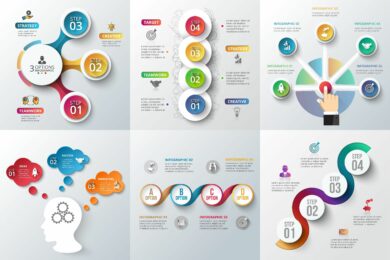
1. Toggl Track - time tracking
What it does: tracks how much you work (by projects and clients).
Why it is useful: helps to understand who is “eating” time for nothing and where you can raise the rate.
For whom: freelancers who calculate hourly pay.
Price: free + paid tariff.
Minus: The interface is a bit cumbersome if you just want to “set it and forget it”.
🧠 What is this anyway?
Toggl Track — is a convenient online service that helps you track how much time you spend on tasks, clients, and projects. It’s perfect for freelancers who work on an hourly rate or just want to understand where their work time goes.
⚙️ What can Toggl do?
- ⏱ Start and stop the timer in 1 click
- 📋 Grouping by projects and tasks
- 👥 Teamwork (if you are not alone)
- 📊 Detailed analytics: how many hours were spent on what
- 🔁 Integrations with other services (Notion, Trello, Asana, etc.)
- 📱 Mobile app + Chrome extension
🏆 How is it useful for a freelancer?
| Situation | How Toggl Helps |
|---|---|
| You work on an hourly basis. | Proves to the client how much you really worked |
| You don't meet deadlines | Helps to identify "time wasters" |
| You are confused between projects | Everything is clearly recorded by category |
| Do you want to analyze productivity? | Statistics for the day, week, month - in graphs and numbers |
💸 How much does it cost?
- For free — up to 5 users, with basic functions (timer, projects, reports)
- Paid from $10/month - if you need advanced analytics, reports, branding and work teams
🧩 Cons (to be honest)
- The interface may seem cumbersome to a beginner.
- Some functions (like auto tracking) are only available on paid plans
- The built-in Pomodoro mode is simple
🔗 Official website:
📝 Verdict:
If you are a freelancer who wants to manage your time, not get lost in it, — Toggl Track is one of the easiest and most honest options.
No need to invent anything - just turn on the timer, do the job, get the report.
📘 Service overview Notion — universal desktop for freelancer
🧠 What is this?
Notion — is like a Swiss army knife for productivity: here you can store notes, tables, task lists, client databases, post plans, project templates — and all this in one place.
📌 Suitable for copywriters, designers, project managers, marketers and those who manage several projects in parallel.
⚙️ What can Notion do?
- 📄 Create pages with text, tables, checklists, databases and galleries
- 🧩 Flexible templates: from CRM to content calendar
- 🔗 Nesting of pages, like in folders
- 🧠 Internal wikis (knowledge bases, guides, instructions)
- 🤝 Collaboration with clients or a team
- 🖼️ Visually beautiful and customizable
🧑💻 Example for a freelancer:
You are a copywriter. In Notion you can:
- Maintain a list of clients with contacts
- Create a brief template
- Create a content plan for the month
- Store portfolio
- Plan tasks with deadlines
- Add a commercial proposal template
You don’t need to “keep all these things in your head” or search through folders - you have one tab where everything is laid out.
💸 How much does it cost?
- For free - almost everything a freelancer needs is available without restrictions
- Paid from $8/month - if you want to work in a team or use API and versioning
🧩 Cons (honestly)
- Need to time, to get used to - it may seem overwhelming at first
- There is no offline mode really - requires internet connection
- Some things are easier to do in Google Sheets (if you need a formula and calculation)
🔗 Official website:
📝 Verdict:
Notion is the best choice if you want to collect everything in one place.
Especially useful for those who are tired of the chaos in Google Docs, Trello and messengers.
In 2025, Notion has become not just a fad, but a working standard for freelancers, producers, and professionals who value order.
🎥 Service overview Loom - screen recordings and video messages in 1 click
🧠 What is this?
Loom — is a service that allows you to quickly record a video of your screen and your face, and then immediately send it to a client, customer or colleague via a link.
No editing, no uploading to YouTube, no “extra fuss”.
⚙️ What can Loom do?
- 🖥️ Screen + camera recording (or separately)
- 🎤 Voice comments (explain right during the recording)
- 🔗 Instant link to the video (inserted - and that's it)
- 💬 Comments on the video (the client can leave feedback right there)
- ✏️ Video can be trimmed, call-to-action, preview added
- 📱 Works on Windows, macOS, browser and mobile apps
🧑💻 How does this help a freelancer?
| Situation | How Loom solves |
|---|---|
| I need to explain, what did you do according to the project | You record the screen and tell it with your voice: what and why |
| Got some edits from the client and he “didn’t get it” | Show where and what you changed |
| Do you want to present? design, landing or structure | Just recorded a walkthrough |
| Explain the technical task | Much faster than writing 2 pages of text |
| Communication with foreign clients | No need for Zoom — just Loom, short and in English |
📊 Advantages
- 🕒 Saves time - instead of meeting, you just send a video
- 💡 Makes communication visual
- 💼 Improves service level: customers appreciate “live explanation”
💸 How much does it cost?
- For free: up to 5 minutes of recording, up to 25 videos
- Pro from $12/month: unlimited, with advanced features
- There are business plans if you work with a team.
🧩 Cons (to be honest)
- The free version has a short limit.
- Sometimes the video quality is lower on weak internet
- Direct downloads - only in paid plan
- Not all clients are comfortable communicating via video
🔗 Official website:
📝 Verdict:
Loom is a superpower for any freelancer who wants to make fewer calls and earn more.
Especially useful for designers, marketers, developers, project managers.
Even a 2-minute video often replaces 5 paragraphs of text and 20 minutes of correspondence.
🗂️ Services overview: Trello / ClickUp / Asana
Services for managing tasks, deadlines and chaos in your head
🧠 What are they for anyway?
If you:
- you lead right away several projects
- are you working with repetitive tasks
- Want see progress for each client
- you get confused about where the “deadline is today” and where “it was yesterday” —
then you don't need a notebook, but task management system.
🔹 1. Trello - visual task board (kanban)
How it works:
Each task is a card that can be moved between columns (For example: “To Do → In Progress → Done”).
Pros:
✅ Very easy to get started
✅ Beautiful and visually clear
✅ Ideal for solo freelancers
✅ Free and without unnecessary burden
Cons:
– It’s difficult to scale if there are a lot of projects
– No built-in subtasks (only via Power-ups)
Ideal for:
copywriters, designers, small projects
🔹 2. ClickUp - advanced all-in-one platform
How it works:
ClickUp is a mix of Trello, Notion, Asana and a calendar. It's great for those who want it all: tasks, time tracking, goals, documents, boards, mindmaps, etc.
Pros:
✅ Flexible structure (subtasks, statuses, priorities)
✅ Built-in time tracking
✅ Works as a CRM and task manager
✅ Huge functionality - even in the free version
Cons:
- Steep learning curve
- Not everyone needs such a "monster"
– May lag on weak devices
Ideal for:
those who manage many clients/projects at once, project managers, marketers
🔹 3. Asana - project management with a team or client
How it works:
You create projects, break them down into tasks and subtasks, add deadlines, descriptions, comments and performers.
Pros:
✅ Convenient for teamwork
✅ Integrates well with Gmail, Slack, Zoom
✅ There is a visual calendar and timeline
Cons:
- Free version is limited
– Less flexible than ClickUp
– Not as intuitive as Trello
Ideal for:
designers, agencies, teams, startups
🧩 Brief comparison:
| Name | Ease | Functions | Suitable for |
|---|---|---|---|
| Trello | ⭐⭐⭐⭐⭐ | ⭐⭐ | Beginners, solo |
| ClickUp | ⭐⭐ | ⭐⭐⭐⭐⭐ | Advanced |
| Asana | ⭐⭐⭐ | ⭐⭐⭐ | Teamwork |
📝 Verdict:
- Just started - get Trello.
- Lots of projects - try ClickUp.
- Working in a team - Asana.
Or like this:
👉 Trello — “Board on the fridge”
👉 ClickUp — "Secret Headquarters"
👉 Asana — “Remote Office”
🎨 Service overview Figma — design, layouts and prototypes directly in the browser
🧠 What is this?
Figma — is an online platform for creating layouts, interfaces, presentations and visuals. It works directly in the browser and allows in real time work on designs with clients or a team.
Today, Figma is the gold standard among UI/UX designers, freelancers, and web developers.
⚙️ What can Figma do?
- 🖌️ Creation of web design, interfaces, landing pages, presentations, banners
- 🧱 Working with components, auto-layouts and adaptives
- 👥 Collaborate in live mode
- 🔗 Embedding prototypes into a website or document
- 📦 Plugins: icons, text generators, lorem ipsum, mockups and more
- 📄 Options: presentations, social networks, UI, wireframe, moodboard — all in one window
🧑💻 How does it help a freelancer?
| Situation | How Figma solves |
|---|---|
| Do you make websites, presentations or interfaces? | You create everything in one space, without Photoshop. |
| The client asks to "show how it will work" | Turn on the mode prototype - everything clicks |
| Working with a team/programmer | Everyone sees the same thing, without file transfers |
| We need to send the layout quickly. | Just give a link, no need to export |
| Work with templates and styles | Are you using it? components And options, so as not to do the same thing 100 times |
💸 How much does it cost?
- For free — up to 3 files, but with full functionality
- Pro from $12/month - if you work with a team and use versioning
- FigJam (whiteboard) — available in free and paid form
🧩 Cons (honestly)
– Requires a stable internet connection (everything is in the cloud)
- It may be for a newbie difficult at the start - a lot of terms
– Large files can slow down the browser
– Sometimes versions get mixed up if you work with copies
📊 Who it is definitely suitable for:
- For web designers
- UX/UI specialists
- For content developers (if they make presentations or landing pages)
- For producers and SMM freelancers (story design, guides)
- For developers (work on layout)
📝 Verdict:
If you are a designer, or just want to become one, Figma is not “you can try”, but “you definitely should”.
The interface is flexible, habits are quickly developed, customers are happy.
🤖 Review: ChatGPT / Notion AI / other neural networks
How Freelancers Are Using AI to Get Work Done Faster and Earn More
🧠 What is this?
These aren't just "chatbots." They're an entire ecosystem of smart tools that write, analyze, generate, suggest ideas, code and even mockups.
🔹 1. ChatGPT (from OpenAI)
What it can do:
- ✍️ Writes articles, letters, texts, scripts, briefs
- 💡 Generates ideas for content, titles, headings
- 📜 Helps to structure the text, make technical specifications
- 💬 Replies to customer emails
- 🧑🎓 Explains complex things in simple terms (perfect for beginners)
Example:
You are a copywriter. You need to write 5 product descriptions - you ask ChatGPT for the structure, examples, ideas - and then you just adapt it to yourself.
🔹 2. Notion AI
What it can do:
- 🔍 Summarizes the results of meetings and correspondence
- 📋 Summarizes texts
- 🧠 Generates tasks from the project description
- 📝 Writes drafts of posts, notes, instructions directly in Notion
Peculiarity: works inside your workspace, no need to copy-paste
🔹 3. Midjourney, DALL E, Leonardo — image generators
What they can do:
- 🎨 Create images based on description (for example: “freelance blog cover in 3D collage style”)
- 📦 Help to make covers, avatars, banners
- 🧠 A great option if you need “something unusual” but don’t have the budget for a designer
🔹 4. Descript / ElevenLabs / Runway — for video and audio
What they can do:
- ✂️ Video editing based on text (delete words - the phrase is cut out)
- 🧑🎤 Voice acting by neural networks (voice can be generated)
- 📺 Create Short Reels/TikTok from Long Video
- 🎤 Noise removal, interview auto-transcription
💡 Who benefits most from neural networks:
| Profession | How does it help? |
|---|---|
| Copywriter | Quick draft, ideas, editing |
| SMM manager | Posts, Headlines, Section Ideas |
| Designer | Generating covers, references |
| Video editor | Quick cut and subtitles |
| Producer | Scripts, course descriptions, page structure |
| Programmer | Hints, code samples, bugfixes |
💸 How much does it cost?
| Service | For free? | Paid |
|---|---|---|
| ChatGPT | Yes, the basic version | from $20 per month for Pro with GPT-4o |
| Notion AI | No | from $10 per month |
| Midjourney | No | from $10 per month |
| Description | Partially | from $12/month |
| Runway | There is a free plan | from $15/month |
📝 Verdict:
If you're not using AI in your work yet, you're wasting your time.
Neural networks do not replace a freelancer, they speed him up 5 times.
📝 Overview: Tally / Typeform / Jotform
Services for creating smart forms that do some of the work for you
🧠 Why does a freelancer need forms?
- 📋 Collect information from the client before the start of the project
- 💬 Get feedback from customers
- 🧠 Conduct a mini-research or survey
- 🛒 Accept orders via a form, not through endless correspondence
🔹 1. Tally — "Notion-style" forms for the lazy (and smart)
How it works:
The form is like a page in Notion: you write text — a block appears. Minimalistic, fast and beautiful. You can connect Google Sheets, webhooks, logics, redirects and custom domains.
Pros:
✅ Completely free (you don't even have to pay for the brand)
✅ Integrations with Zapier, Airtable, Google Sheets
✅ Stylish forms in the spirit of Notion
✅ Supports conditions (if/else), payment, file upload
Cons:
– Without visual animations like Typeform
– There are fewer templates than competitors so far
🔗 tally.so
🔹 2. Typeform — the king of UX forms (but not free)
How it works:
Shows one question on the screen, visual, smooth, interactive. It feels less like a questionnaire and more like a mini-app.
Pros:
✅ WOW effect: looks expensive and technologically advanced
✅ Lots of templates
✅ Supports conditions, logic, payments, API
✅ Integration with any services
Cons:
– Paid (free plan – with limitations)
– Sometimes “overloaded” with visuals for simple tasks
🔹 3. Jotform — a powerful combine with templates for everything
How it works:
A huge library of forms: from event registration to online payment. Can be customized for a brand, integrated into a website, and connected to CRM.
Pros:
✅ There is a template for any task
✅ Payments, e-sign, schedules support
✅ Can be embedded directly into the landing page
✅ PDF Forms Support
Cons:
– Lots of buttons and fields – difficult for a beginner
– Design can appear “outdated” without customization
🧩 Comparison:
| Name | Simplicity | Functionality | Ideal for |
|---|---|---|---|
| Tally | ⭐⭐⭐⭐⭐ | ⭐⭐⭐⭐ | Simple Forms, Notion Fans |
| Typeform | ⭐⭐ | ⭐⭐⭐⭐⭐ | Presentable questionnaires |
| Jotform | ⭐⭐⭐ | ⭐⭐⭐⭐⭐ | Complex forms with logic and payments |
💡 Usage examples:
| Sphere | Example form |
|---|---|
| Design | Brief for logo development |
| Copywriting | Text order form |
| Education | Online Enrollment Form |
| Sales | Interest survey for quiz |
| Marketing | Subscription + freebie via form |
📝 Verdict:
- Want fast, free and easy - take it Tally
- Need to wow design and animation — Typeform
- Want maximum settings, PDF and payment — Jotform
🎨 Review: Canva / VistaCreate / Adobe Express
How to Make Covers, Presentations, Posts, and Documents - Without Knowing Photoshop
🧠 Who is this for?
- Copywriters who create visuals for texts
- SMM specialists and marketers who do not have a designer
- Speakers, producers, freelancers who need style
- Anyone who wants to quickly make a beautiful creative
🔹 1. Canva — the universal king of no-code design
What can be done:
- Posts and Stories
- YouTube Covers
- Presentations, infographics
- Documents, CVs, price lists
- Video with animation and subtitles
Pros:
✅ Intuitive interface
✅ Thousands of templates for any task
✅ Support for animations, videos and music
✅ Collaboration and branding support
Cons:
– Some elements are only in Pro
– Sometimes the patterns are too “recognizable”
🔹 2. VistaCreate (formerly Crello) - Canva alternative from VistaPrint
Peculiarities:
- More animation than Canva
- A library of templates with a strong focus on advertising
- Convenient for creating creatives for social networks and paid advertising
Pros:
✅ Handles gifs and animations well
✅ There is a brand kit and teamwork
✅ Flexible editor for videos and banners
Cons:
– The interface is not as smooth as Canva
- Less free content
🔹 3. Adobe Express — a lightweight option from Adobe
What it can do:
- Design of banners, posters, email
- Social Network Builder
- Templates with Adobe Fonts and Stocks
- Online photo and text processing
Pros:
✅ Synchronization with other Adobe products
✅ Great typography and style
✅ Unique templates
✅ Quick generation of PDF and stories
Cons:
– The interface may be unusual
– Less tutorials than Canva
📊 Comparison:
| Service | Simplicity | Animation | Template base | Ideal for |
|---|---|---|---|---|
| Canva | ⭐⭐⭐⭐⭐ | ⭐⭐⭐⭐ | ⭐⭐⭐⭐⭐ | Everything: from presentations to stories |
| VistaCreate | ⭐⭐⭐⭐ | ⭐⭐⭐⭐⭐ | ⭐⭐⭐⭐ | Creatives, advertising, social networks |
| Adobe Express | ⭐⭐⭐ | ⭐⭐⭐ | ⭐⭐⭐⭐ | Posters, banners, stylish PDF |
🧩 Usage examples:
| Task | Tool |
|---|---|
| Presentation for the client | Canva / Adobe Express |
| Video Cover | Canva / VistaCreate |
| Infographics about freelancing | Canva |
| Banner for Instagram advertising | VistaCreate |
| Document with price list | Adobe Express |
📝 Verdict:
Canva is the “Google Docs” of design. VistaCreate is a creative and animated competitor. Adobe Express is style for aesthetes.
✅ Review: Trello / Notion / ClickUp
How freelancers can organize their work so they don’t forget, don’t burn out, and get everything done
🧠 What is this for?
- 📌 Manage projects and clients
- ✅ View tasks by days/weeks
- ⏳ Keep track of deadlines
- 🧩 Make checklists, notes, knowledge bases
- 📈 Collect analytics on work
🔹 1. Trello — Kanban style task boards
How it works:
You create a “board” → add columns (“Planned”, “In progress”, “Done”) → inside the cards are tasks, checklists, attachments.
Pros:
✅ Ideal for visual learners and beginners
✅ Convenient drag & drop interface
✅ Free for basic tasks
✅ Suitable for collaboration with the client
Cons:
– Limited capabilities without Power-Ups
– No built-in text/database editor
🔹 2. Notion — notebook, database, manager and creative space in one
How it works:
Pages, lists, databases, tables, templates, calendars, galleries - you build your own system. Suitable for complex projects and creative tasks.
Pros:
✅ You can collect everything: from tasks to CRM
✅ Suitable for both freelancers and agencies
✅ Powerful templates: trackers, portfolios, schedules
✅ Integration with AI, widgets, databases
Cons:
– Not everyone likes flexibility and the lack of “ready-made solutions”
– It takes time to get used to
🔹 3. ClickUp — professional task manager for large volumes
How it works:
It's like Asana on steroids: tasks, subtasks, time trackers, goals, teams, Gantt charts, working hours.
Pros:
✅ Level: freelancer → team → agency
✅ Time tracking, goals, analytics
✅ Strong free plan
✅ There is everything: from Kanban to Mind Map
Cons:
- Complex interface
- Requires adjustment, otherwise you get confused
🧩 Comparison:
| Service | Simplicity | Flexibility | Suitable for |
|---|---|---|---|
| Trello | ⭐⭐⭐⭐⭐ | ⭐⭐ | Beginners, visual learners |
| Notion | ⭐⭐ | ⭐⭐⭐⭐⭐ | Creative, systemic |
| ClickUp | ⭐⭐ | ⭐⭐⭐⭐ | Teams, agencies, Pro-freelancers |
🧩 Examples:
| Task | Tool |
|---|---|
| Weekly Task Plan | Trello / Notion |
| Project Knowledge Base | Notion |
| Managing tasks in a team | ClickUp |
| Tracking customers and orders | Notion / ClickUp |
| Maintaining a content plan | Trello / Notion |
📝 Verdict:
Trello is like a whiteboard on the wall, but online.
Notion is like LEGO: you assemble it to suit your needs.
ClickUp - if you want structure, timers, control, scale.
🎓 Overview: Skillshare / Coursera / Prometheus
Where to study freelancing: top courses in design, writing, SMM, sales, AI and more
🧠 Why is learning important?
- 💼 The market is changing - you can't survive without upgrading your knowledge
- 🧰 If you want to take on new projects, learn new tools
- 📈 The wider the stack, the higher the price per hour
- 🌍 Online learning = minimum investment, maximum benefit
🔹 1. Skillshare — short and practical courses from real freelancers
What is this:
A platform with thousands of courses on creative, marketing and business skills. All in English, but with subtitles.
What they teach:
🎨 Design, illustrations, photos
📢 SMM, copywriting, storytelling
💼 Freelancing and personal brand
📹 Video editing and animation
Pros:
✅ Lessons are 10-20 minutes long
✅ Many examples from real freelancing
✅ There is a mobile application
✅ Trial period 7-30 days
Cons:
- No certification
- English language only
🔹 2. Coursera — academic online education from universities and corporations
What is this:
A platform with courses from Google, Meta, Yale, Stanford, etc. Format: video + tests + project + diploma.
What they teach:
🧠 Programming, design, business
🔍 Digital Marketing, SEO, Advertising
📊 Data Science, Analytics
👨🎓 Soft Skills: negotiations, teamwork
Pros:
✅ Certificates (including from Google, Meta)
✅ Courses from leading universities
✅ Opportunity to study for free (and pay for a diploma)
✅ There is a mobile application
Cons:
– The courses are long (weeks-months)
– Most are in English (but with translations)
🔹 3. Prometheus — Ukrainian platform with courses in native language
What is this:
National educational platform from Ukrainian universities, teachers and experts. There are both free and paid courses.
What they teach:
🇺🇦 IT, Marketing, Startups
💬 Psychology, negotiations, soft skills
📚 Gromadianska osvita, Ukrainian language
⚙️ Basics of freelancing, SEO, targeting
Pros:
✅ Courses in Ukrainian
✅ Free access to many programs
✅ Strong content from Ukrainian experts
✅ Current topics (crisis, digitalization, work in the minds of war)
Cons:
- Less variety than Coursera
- Some courses are outdated
📊 Comparison:
| Platform | Language | Certificate | Who is it ideal for? |
|---|---|---|---|
| Skillshare | 🇬🇧 | ❌ | Quickly upgrade your freelance skills |
| Coursera | 🇬🇧 + 🌍 | ✅ | Get a diploma, complete a program from Google |
| Prometheus | 🇺🇦 | ✅/❌ | Study in your native language, without payment |
💡 Tips:
- Skillshare — to quickly learn something practical (for example, “how to make a landing page in Figma”)
- Coursera - to get a deep profession or certificate (for example, Digital Marketing from Google)
- Prometheus — if you want to study in Ukrainian and support local initiatives
📝 Verdict:
Want to learn from practitioners? Skillshare
Need a diploma? Coursera
Do you want to study in your native language and for free? Prometheus
💻 Review: GitHub / CodePen / JSFiddle
Where a freelance developer can conveniently store, show and test code online
🧠 Why is this necessary?
- 👨💻 Create open repositories for portfolios
- 🚀 Make demo versions of projects (HTML, CSS, JS)
- 📤 Quickly send the client a link with an example
- ✅ Show the level, style, and neatness of the code
🔹 1. GitHub — repositories, portfolios and open-source
What is this:
A platform for storing, tracking changes, and collaboratively developing code. But also a great place for a freelance portfolio.
What is possible:
📁 Store projects and versions
👀 Show the client: “Here is my code”
🧪 Documentation, README, demo
🔥 Portfolio with markdown page (GitHub Pages)
Pros:
✅ Authority in the IT world
✅ Free for private and public projects
✅ Suitable for backend and frontend
✅ Works as a full-fledged hosting
Cons:
– Requires understanding of Git
- Not a visual interface
🔹 2. CodePen — online editor for HTML/CSS/JS with instant preview
What is this:
Interactive code editor with real-time results. Convenient for tests, UI experiments and customer demonstrations.
What is possible:
🎨 Write HTML, CSS, JS
🔗 Get a link and show it to the customer
📁 Publish UI components, landings, buttons, effects
Pros:
✅ The result is immediately visible
✅ There are likes, followers - like a social network
✅ Easy to learn
✅ Can be embedded on a website
Cons:
– Does not support server side
– Limited to frontend only
🔹 3. JSFiddle — a lightweight alternative to CodePen for quick debugging
What is this:
A quick JavaScript sandbox to test an idea, bug, or library.
What is possible:
🧪 Write JS and see the result
📤 Share a link to the work
🧵 Integration with libraries (jQuery, Vue, React, etc.)
Pros:
✅ Simple, fast
✅ No registration required
✅ Easy interface, optimized for JS
Cons:
- Less visual
- Almost not suitable for a portfolio
📊 Comparison:
| Service | For what | Complexity | Suitable for |
|---|---|---|---|
| GitHub | Portfolio, projects, code | ⭐⭐⭐ | Backend, fullstack, open-source |
| CodePen | UI, demo, animations | ⭐ | Frontend, web design |
| JSFiddle | Quick JS tests | ⭐ | JS developers, bugfixes |
🔧 Usage examples:
| Task | Service |
|---|---|
| Show the client the button design | CodePen |
| Make a demo interface with JS animation | CodePen |
| Upload a project to apply for a vacancy | GitHub |
| Test a bug in jQuery | JSFiddle |
| Store your resume as a website | GitHub Pages |
📝 Verdict:
GitHub is a basic must-have for all programmers
CodePen is the best way to show what your UI looks like
JSFiddle - A minimalist tool for quick debugging












No Comments